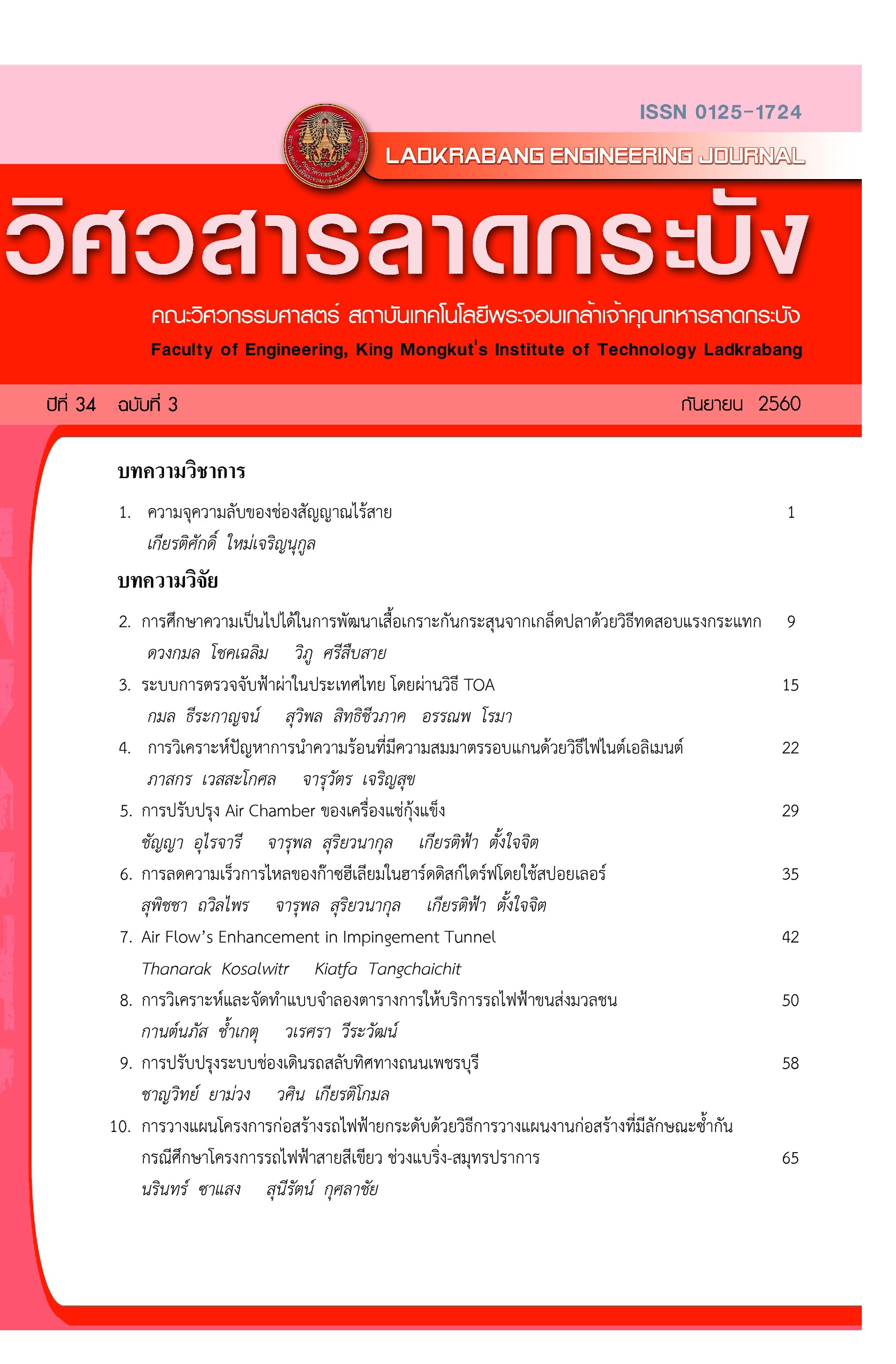A Reversible Lane System Improvement of Phetchaburi Road
Keywords:
Fixed Time Interval, Reversible Lane System, VISSIM SimulationAbstract
This paper presents a reversible lane system improvement of Phetchaburi road from Mitsampan intersection to Asok-Phetchaburi intersection. The length of reversible lane is 280 meter. Currently, this reversible lane system in this study is not effective because it is controlled by traffic policeman that lack knowledge in traffic engineering. Consequently, this research is using the fix time interval to choose a direction that are get permission to use reversible lane and compare the result before and after improvement from VISSIM simulation. When the reversible lane system get improvement by using fix time interval measure. As a result, the throughput vehicle of the selected direction that use reversible lane in morning peak hour at 7:15 – 8:15 a.m. is increase from 2,772 pcu to 3,130 pcu (12.91%) and at 8:15 – 9:15 a.m. is increase from 2,700 pcu to 2,788 pcu (3.26%).
References
[2] Institute of Transportation engineers, “A Toolbox for Alleviating Traffic Congestion” , pp. 49, 1989.
[3] B. Wolshon and L. Lambert, “Reversible Lane systems: Synthesis of Practice”, Journal of Transportation Engineering–ASCE, Vol.132, Issue 12, pp.933-944, December, 2006.
[4] TRB of the National Academies., “Convertible Roadways and Lanes”, NCHRP Synthesis 340, pp.40, 2004.
[5] F. DeRose, “Reversible Center-Lane Traffic System Directional and Left-Turn Usage,” Highway Research Record 151, Highway Research Board, National Research Council, Washington, D.C., pp. 1-17., 1966.
[6] Y. Liu, X. Wang, X. Liang, “Conversion Mechanism of Reversible Lane System under Urban Tidal Flow Condition”, ICCTP 2011, pp. 1030-1041, 2011.
[7] R. Dowling, A. Skabardonis, V. Alexiadis, “Traffic Analysis Toolbox Volume III: Guidelines for Applying Traffic Microsimulation Software”, Federal Highway Administration, pp. 1-132, 2004.
Downloads
Published
How to Cite
Issue
Section
License
The published articles are copyrighted by the School of Engineering, King Mongkut's Institute of Technology Ladkrabang.
The statements contained in each article in this academic journal are the personal opinions of each author and are not related to King Mongkut's Institute of Technology Ladkrabang and other faculty members in the institute.
Responsibility for all elements of each article belongs to each author; If there are any mistakes, each author is solely responsible for his own articles.






